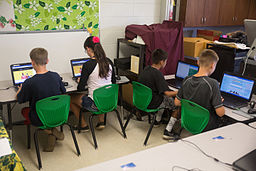Sampling > Experience Sampling
What is Experience Sampling?

Experience sampling has the following characteristics:
- Collects real-time, “in the moment” data.
- Collects data from the environment where the event is actually happening in.
- Typically involves a large amount of observations.
- Usually involves a brief open- or closed-ended questionnaire.
- Is dependent upon careful data collection.
This type of sampling is also called:
- Ambulatory self-reporting,
- The daily diary method,
- Ecological momentary assessment,
- intensive-longitudinal designs.
When do Participants Note Their Experiences?
Exactly when participants pause their activity is up to the researcher. The primary ways are: event occurrence, pre-selected time intervals, or signalling.
Event occurrence involves key events — usually ones pertaining to the study in question. For example, a study on time management might ask someone to record details when they are late to an appointment or a headache medication study might ask a participant to answer a short questionnaire when they get headaches.
- Estrin and Sim (2010) used the GPS feature on mobile phones to find out the time of day study participants left the house. The time was used as a measure of wellness for people with chronic illnesses and conditions like asthma, diabetes and obesity.
- Zirkel et. al asked college students to complete surveys immediately after each class, where they indicated how much anxiety (or calmness), sadness (or happiness) they felt during the class. The authors intend to use the data to see how these experiences affected students future decisions to take classes in a particular discipline or major.
Pre-selected time intervals are set at the beginning of the study. A person might be asked to report how they feel when they wake up, when they eat meals, or when they go to bed.
Signaling might involve texts, phone calls or a set timer. For example the Science in the Moment(SciMo) study distributed beepers to students in high school science classes. The goal was to investigate how male and female students felt about science education. The beepers went off randomly during class, signaling students to complete short surveys about their experiences.
Advantages over Other Data Collection Methods
Experience sampling has several advantages over other methods:
- You can get access to parts of people’s lives that would otherwise be difficult or impossible to access (such as feelings during a workout or while participating in professional development classes).
- Recall bias is reduced because you’re collecting data as the event is actually happening.
- Thoughts and feelings can be studied in very specific situations.
- Statistical power tends to be higher than for many other quantitative methods.
Context-Aware Experience Sampling
Context-Aware Experience Sampling(CAES) uses technology like mobile phones to detect events, triggering a cue to collect data. For example, software can detect an increased heart rate, an activity like cycling, or movement into a certain geographic area(using GPS location). The CAES project at MIT is (as of time of writing) developing more tools in this area.
References
Bolger, N. Intensive Longitudinal Methods: An Introduction to Diary and Experience Sampling Research (Methodology in the Social Sciences) 1st Edition. The Guilford Press. 2013.
Estrin, D., & Sim, I. (2010). Health care delivery: Open mhealth architecture. An engine for health care innovations. Science, 330, 759–760. Retrieved August 17, 2017 from: https://courses.cs.washington.edu/courses/cse599p1/16sp/readings/estrin2010.pdf
Hektner, J.M., Schmidt, J.A., & Csikszentmihalyi, M. (2007). Experience sampling method: Measuring the quality of everyday life. Thousand Oaks, CA: SAGE Publications.
Zirkel et. al (2015). Experience-Sampling Research Methods and Their Potential for Education Research. Retrieved August 17, 2017 from: http://indiana.edu/~mcmlab/Zirkel%20Garcia%20Murphy%20ER%202015.pdf